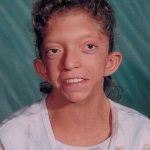 A congenital (present at birth) genetic condition whose principal features include congenital heart defect, short stature, indentation of the chest, impaired blood clotting, and a characteristic configuration of facial features. Cognitive deficits, social problems, attention deficits, and anxiety are also present.
A congenital (present at birth) genetic condition whose principal features include congenital heart defect, short stature, indentation of the chest, impaired blood clotting, and a characteristic configuration of facial features. Cognitive deficits, social problems, attention deficits, and anxiety are also present.
Noonan syndrome is a rare genetic disorder that causes a wide range of clinical features of varying severity, most commonly involving distinctive facial features, cardiac abnormality, chest deformity, and short stature. The condition was originally reported in 1883 but described more thoroughly by Noonan and Ehmke (1963). It is named for Jacqueline A. Noonan, a pediatric cardiologist, who identified the clinical and genetic characteristics of the syndrome. The syndrome is transmitted as an autosomal dominant trait, with some cases attributed to spontaneous mutation. As with many other autosomal dominant disorders, there is widely variable expressivity, which can make mildly affected individuals difficult to recognize. Noonan syndrome is genetically heterogeneous, with research indicating association with multiple gene locations (Online Mendelian Inheritance in Man, 2001). It is identified by clinical characteristics, and there is currently no diagnostic test for it. Chromosome studies are normal. Several other conditions have symptoms similar to those of Noonan syndrome, including cardiofaciocutaneous syndromes, Turner syndrome, Costello syndrome, Noonan-like multiple giant cell lesion syndrome, neurofibromatosis-Noonan syndrome, Watson syndrome, and LEOPARD syndrome.
Noonan’s syndrome is an inherited condition that bears similarities to Turner’s syndrome; however, individuals with Noonan’s syndrome possess a complete set of chromosomes. This syndrome can impact both males and females and is characterized by various features. These include congenital heart disease, a webbed neck appearance, drooping eyelids known as ptosis, shortsightedness (myopia), feeding difficulties during infancy, short stature, poor muscle tone (hypotonia), hearing challenges, delayed speech development, postponed puberty, and, in males, undescended testes.
When it comes to inheritance, Noonan’s syndrome follows an autosomal dominant inheritance pattern. Roughly fifty percent of all cases have a family history of the condition, while the remaining cases result from new mutations. While there is no overarching cure for the syndrome, numerous features like undescended testes and heart issues can often be effectively treated.
